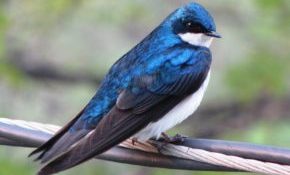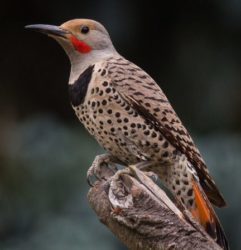Flickers look different from most of the woodpeckers we commonly see in the New England wilds. It is more of an oddball in the woodpecker clan. It has a speckled, chestnut-brown body with a black crescent on its spotted breast, and a black mustache—when it is a male. We might see yellow under the surfaces of its wings and tail if it flies overhead. A new article by ecologist Dave Eastman.
All Posts by Dave Eastman

Country Ecology: Migratory Bird Treaty Act
This year marks the 100th anniversary of the Migratory Bird Treaty Act, which was signed by President Woodrow Wilson and protects more than 1,025 species. All other legislation pertinent to the safety of our native birds is amended to this important bill, which reflected the plight of avian life in those times. The Act ended the millinery trade, which was selling feathers from egrets and the like, making such ornamentation a societal no-no.

Country Ecology: Gray Jays
If you hike, chances are good that you’ve encountered a Gray Jay–a smart, impulsive, relatively tame bird that will approach looking for food crumbs from your snack or lunch. Gray Jays hide small caches of food throughout their territories in late summer and autumn so they’ll have a ready larder for winter. As such, they can survive cold winter conditions in which other birds can’t exist. But now, studies show unseasonably warm weather is threatening Gray Jays’ reproductive success.

Country Ecology: Chickadee Flock Behavior
David George Haskell wrote a superb article in the autumn issue of Northern Woodlands entitled “Song of the Balsam Fir,” and while he evolved eventually into that subject, he also ruminated about the chickadees he encounters every year. It is good environmental reporting, so I thought I would reproduce his writing about chickadees instead of discussing how intelligent balsam firs are.

Country Ecology: Tree Swallow Populations
Over the last few years, you may have noticed fewer tree swallows competing for your nest boxes’ occupancy, while you earnestly hope to attract a bluebird pair on your open land. Populations of birds that eat flying insects have been dropping at an alarming rate, especially in northeastern North America.

